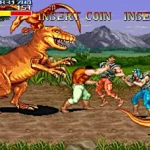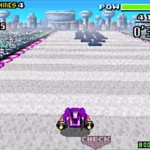Cadash Unleashed: Exploring a Forgotten Gem

Game: Cadash
Release Date: 1989
Genre: Platform
Type: Arcade
Publisher: Taito
Developer: Taito
The emergence of role-playing games in Japan may not have been welcomed by arcade game designers. In the Western gaming landscape, crafting arcade games that resonate with the preferences of home console players is relatively straightforward, given the enduring popularity of driving and shooting genres. However, role-playing games embody characteristics opposite to those of arcade games: they are long, involve extensive dialogue, and tend to rely on the character's abilities rather than the player's skill to determine progress.
Undoubtedly, arcade game designers made efforts to infuse RPG elements into their creations, and Cadash stands as one outcome of that endeavor. Embracing the action RPG platforming akin to Zelda II and Wonder Boy in Monster World, Cadash allows players to accumulate experience, upgrade weapons over time, rest in inns for health improvement, and engage in conversations with locals for helpful hints. Nevertheless, the combat unfolds in real-time, ensuring that the player's skill remains the primary factor determining success against adversaries like Black Pudding.
The appeal of Cadash lies in this sense of progression. Despite its presence in specific Taito compilations, much of the gaming audience may have overlooked it. Nevertheless, we have always been captivated by arcade games that deliver a sense of advancement beyond the typical, fast-paced thrills.
Stages
The game consists of five stages, and while they are not strictly linear, the first stage follows a more straightforward path. Each level presents its challenges, and at times, players may need to backtrack to fulfill specific missions. Take Stage 4, for instance; within this level, you'll encounter a city towards the end. Here, a woman requests that you place a necklace on her deceased husband's grave, situated near the stage's beginning. Returning to the location (thankfully, there's a shortcut) and completing this task rewards you with an item enabling communication with a dog you previously encountered. This dog, in turn, provides information about the level boss.
Difficulty in Cadash
An unintended consequence of the easier difficulty setting is the realization of how short the game is. It was enjoyable, but as a child, I perceived Cadash as a vast adventure that took hours (and a lot of quarters!) to conquer. Looking back, it might have been a naive perspective, but hey, I was 10 years old. However, the truth is that you can complete the game in about two hours. While not necessarily a flaw, it leaves you yearning for more, considering the game's structure suggests an epic adventure but falls short on content.
Despite retaining all elements from the arcade, the visual aspect is where the game diverges the most. In my view, the Turbo version is highly dynamic and slightly oversaturated. The preference for the Genesis version is subjective. The level and background graphics adhere to the arcade structure but undergo significant redesign. The overall appearance is similar, but certain elements don't quite align. Sprites are smaller, and parallax scrolling in the background is entirely absent. However, the music faithfully reproduces the original sound, which is quite impressive.
Gameplay of Cadash
Bezel
You can download the game's bezel or overlay by clicking here.
In Conclusion
In conclusion, Cadash presents a challenging evaluation. The Turbo version remains remarkably true to the arcade experience, capturing the essence of its original counterpart. While there might be some enjoyment in revisiting the game with a different character class, providing a fresh perspective on the gameplay, this aspect doesn't fully compensate for the reality that, once completed, there's little incentive to return. Despite its nostalgic charm and faithful adaptation, Cadash may not boast the replay value needed to keep players coming back for more.
 STUN Runner Arcade: Racing Through the Futuristic Frontier
STUN Runner Arcade: Racing Through the Futuristic Frontier Double Dragon 1 Arcade: Pioneering the Golden Era of Beat-'Em-Ups
Double Dragon 1 Arcade: Pioneering the Golden Era of Beat-'Em-Ups Cadillacs and Dinosaurs: The Most Wanted Arcade Beat'em Up
Cadillacs and Dinosaurs: The Most Wanted Arcade Beat'em Up G.I. Joe Arcade - The Best Sound Effects
G.I. Joe Arcade - The Best Sound Effects Captain Commando - Capcom's Beloved Mascot
Captain Commando - Capcom's Beloved Mascot The Simpsons Arcade - The Most Fun Beat'em Up
The Simpsons Arcade - The Most Fun Beat'em Up F-Zero: Maximum Velocity - In-Depth Analysis for GBA
F-Zero: Maximum Velocity - In-Depth Analysis for GBA
![Cadash Longplay (Arcade) [4K]](https://i.ytimg.com/vi/c6yATZEjM5k/hqdefault.jpg)
Leave a Reply